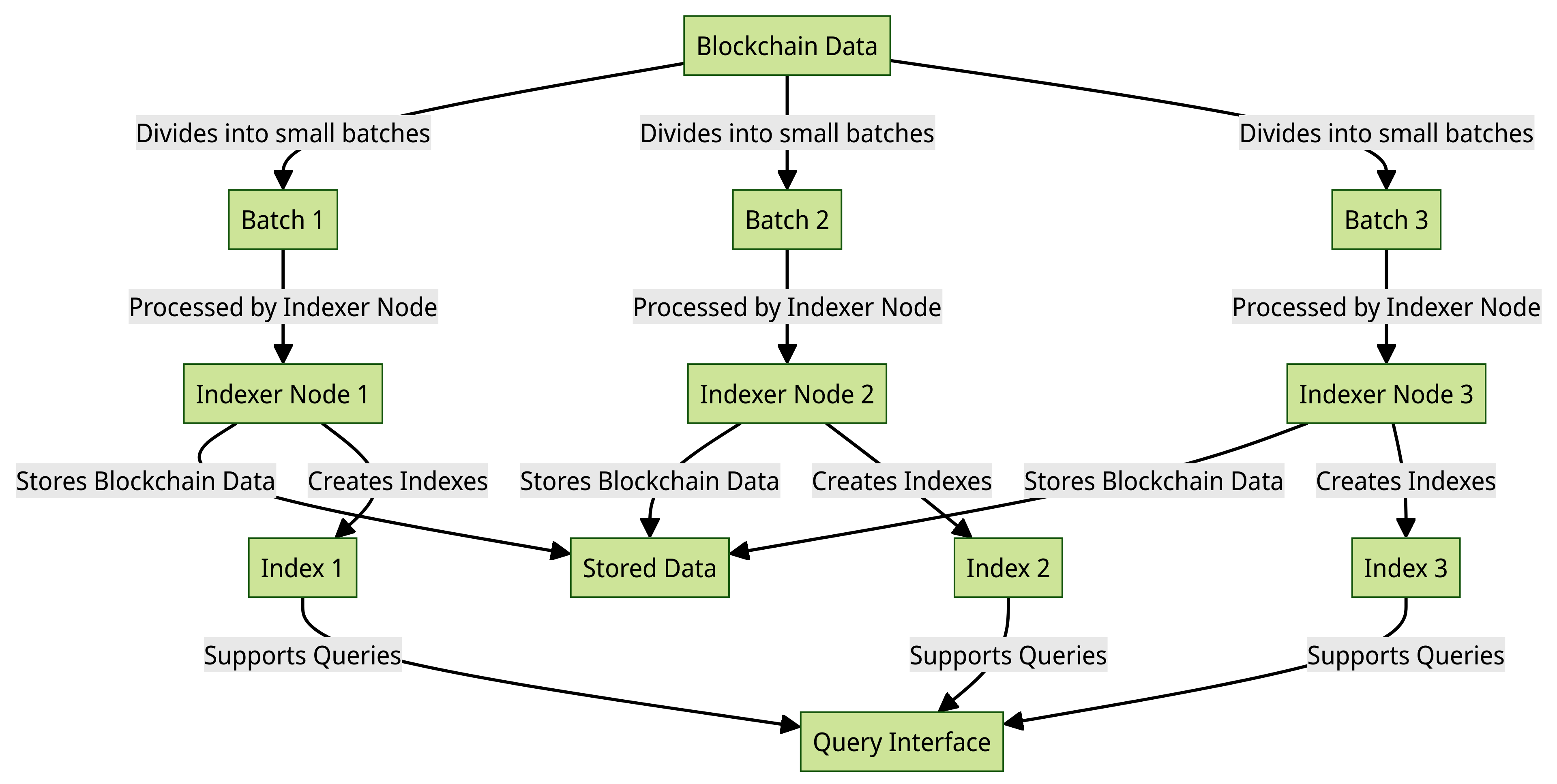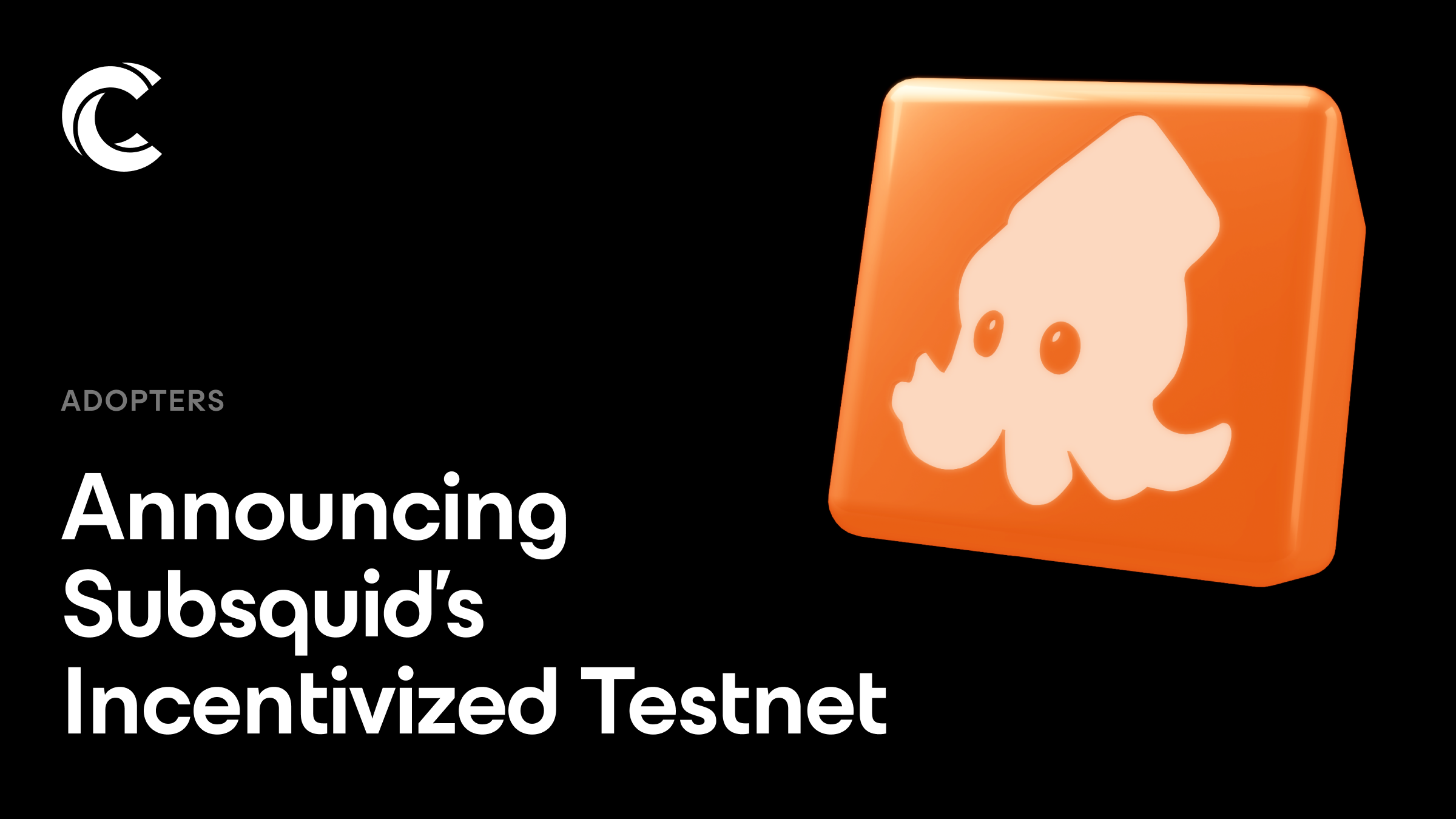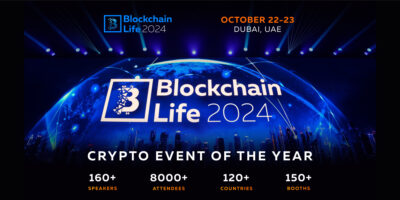Subsquid, a name gaining prominence in the recent days in the world of Web3, is known as a platform providing Web3 data conversion and extraction services. Established in 2021, Subsquid has quickly attracted attention due to its high-quality team and innovative technological breakthroughs. It is anticipated to become one of the industry leaders, offering tools that enable the development of advanced index sets with exceptional synchronization speed. By focusing on synthesizing data both on-chain and off-chain, Subsquid has become a significant player in the blockchain field.

Table of Contents
What is Subsquid?
Subsquid is a platform that offers Web3 data extraction and transformation services. It provides tools for building advanced indexers that can sync at high speeds and enable aggregations of on-chain and off-chain data.
At its core, Subsquid operates as a blockchain indexing SDK and a distributed data lake optimized to serve vast volumes of historical on-chain data from over 100+ chains. Its highly customizable Extract-Transform-Load-Query (ETLQ) stack allows seamless indexing of events, transactions, traces, and state diffs. What sets Subsquid apart is its remarkable speed – capable of indexing up to 50k+ blocks per second. This batch-based processing model ensures a swift and efficient process, making it a preferred choice for developers.
Subsquid’s blockchain indexing solution
What is blockchain indexing?
Blockchain indexing is the process of creating an index for blockchain data. This index allows users to search and access blockchain data quickly and efficiently.
Blockchain is a distributed database that is stored on multiple computers. Blockchain data is stored in blocks, each of which contains a collection of transactions. Blocks are linked together using hashes, creating a continuous chain.
Blockchain indexing allows users to search blockchain data in a variety of ways, such as by transaction address, transaction time, or transaction value. This makes it easier and faster to access blockchain data, especially for large blockchains.
But with a large amount of data, slow indexing will occur, this is when we need a new solution. Subsquid was born to solve this problem.
With Subsquid, there will be no slow indexes. Join me in reading the next part!!!
What method does Subsquid use for indexing the blockchain?
Blockchain indexing is done by Subsquid using a batch-based indexing technique. This is how this approach functions:
- Subsquid divides the blockchain data into small batches.
- Each batch is processed by an indexer node.
- The indexer node stores the blockchain data and creates indexes to support queries.

The batch-based indexing method has the following advantages:
- Increased indexing speed: Subsquid can index up to 50k+ blocks per second using the batch-based indexing method.
- Reduced indexing costs: Subsquid can reduce indexing costs using the batch-based indexing method.
Subsquid also uses a number of other technologies to improve indexing performance, such as:
- Batch-based indexing: This method divides the blockchain data into small batches that are processed by different indexer nodes. This can improve indexing speed and efficiency by allowing multiple nodes to work simultaneously on different batches of data.
- GraphQL API: This is a powerful and flexible data querying interface that allows developers to query blockchain data in a natural way. The GraphQL API provided by Subsquid supports a wide range of queries, including queries for specific data points, queries for relationships between data points, and queries for aggregated data.
- Pre-built indexers: These are indexers that are already configured for specific blockchains. This can save dApp developers time and effort by eliminating the need to configure their own indexers.
Subsquid employs an effective and adaptable indexing technique overall. This technique aids Subsquid in offering a potent and approachable blockchain indexing solution for developers.
* For more information, see the project’s Whitepaper for specifics.
Features of Subsquid
Subsquid is a powerful project that extracts and transforms on-chain data to provide a GraphQL API. It offers a range of features that make it a popular choice for developers. Here are some of the latest features of Subsquid:
- Speed: Subsquid’s FireSquid release introduced massive sync speed increases, allowing it to index up to and beyond 50k blocks per second [1]. This high speed ensures that data is indexed quickly, providing developers with real-time access to on-chain information.
- Scalability: Subsquid is designed to scale and meet the needs of decentralized applications (dApps). It supports multiple blockchains, including around 20 EVM networks and every Polkadot ecosystem chain [2]. This scalability allows developers to build applications that can handle high volumes of data and user interactions.
- Developer-friendly SDK and API: Subsquid provides an extensive tooling ecosystem through its SDK. This SDK offers developers the flexibility to define data schemas, data transformation rules, and the shape of the resulting API [3]. The developer-friendly nature of Subsquid makes it easier for developers to access and manipulate historical on-chain data, enabling them to build complex and responsive dApps using familiar tools.
- Multi-platform support: Subsquid supports multiple blockchains, providing developers with the flexibility to choose the blockchain that best suits their specific use case [4]. This support includes around 20 EVM networks, every Polkadot ecosystem chain, and data access from around 100 chains [5]. By supporting multiple blockchains, Subsquid allows developers to write their applications once and have them work seamlessly on different blockchain networks.
Benefits of Subsquid
Subsquid provides developers of dApps with a number of advantages. Here are a few main benefits:
- Access to Blockchain Data: Subsquid provides dApp developers with easy access to blockchain data. It allows developers to extract and transform data from various blockchain networks, including EVM, Substrate, and WASM-based chains [6]. This access to blockchain data is crucial for building decentralized applications that rely on accurate and up-to-date information.
- Accelerated Development Time: By leveraging Subsquid’s modular architecture and advanced features, developers can significantly speed up the development process. Subsquid offers a resource-efficient and developer-friendly way to build, test, and deploy customized GraphQL APIs and ETLs for blockchain-facing applications [7]. This streamlined development workflow allows developers to focus more on building the core functionality of their dApps.
- Cost Reduction: Subsquid can help reduce dApp development costs. With its efficient data extraction and transformation capabilities, developers can save time and resources that would otherwise be spent on building and maintaining complex data infrastructure. Additionally, Subsquid’s hosting service, Aquarium, provides a convenient and cost-effective solution for deploying and making APIs publicly accessible [8].
What sets Subsquid apart as the preferred choice for developers and projects in the Web3 ecosystem? In my opinion, I believe it is a combination of all the factors mentioned earlier.
Explore SQD Token
The Subsquid Network is operated using an ERC20 token known as SQD, The total supply of SQD tokens is 1,330,000,000. The precise token allocation has not been updated by the project as of this writing; Coinbold will update it for you at a later time. The following are some of its functionalities:
- Payment: functioning as a method of payment for the payment of the fees to the nodes (workers) running the required data pipelines of the Subsquid Protocol and the other workers serving the API requests.
- Utility/work: (a) bonding in order to join the network and running a node as a worker for data pipelines and serving API requests of the Subsquid Protocol requires staking of SQD tokens; and later (b) the possibility of staking in order to access premium datasets and receive discounts on them.
- Delegation: delegated staking for the benefit of the node operator (worker) or the workers of the Subsquid Protocol against a share of the fees earned by such node or worker. staking is done in exchange for a stake in the cryptocurrency.
It is possible that in the not too distant future, the governance of the Subsquid Protocol will be transferred to a decentralized autonomous organization known as the Subsquid DAO. This organization would then be responsible for directing the continued development of the Subsquid Protocol. It is possible that the SQD tokens will be used by Subsquid as a voting mechanism for the Subsquid DAO.
How to earn SQD Token?
You can sign up for the incentivized testnet program here to start earning SQD tokens.

The Coinlist-announced prize table below shows the attractive rewards that will be awarded to the 4000 participants who achieve the best results.
| Rank on leaderboard | Number of participants | Reward pool in SQD | Reward pool (as percent of total) | Estimated reward in SQD |
| 1-10 | 10 | 1,330,000 | 10% | 133,000 |
| 11-50 | 40 | 1,330,000 | 10% | 33,250 |
| 51-100 | 50 | 1,330,000 | 10% | 26,600 |
| 101-200 | 100 | 1,330,000 | 10% | 13,300 |
| 201-400 | 200 | 1,330,000 | 10% | 6,650 |
| 401-700 | 300 | 1,330,000 | 10% | 4,433 |
| 701-1100 | 400 | 1,330,000 | 10% | 3,325 |
| 1101-1600 | 500 | 1,330,000 | 10% | 2,660 |
| 1601-2500 | 900 | 1,330,000 | 10% | 1,478 |
| 2501-4000 | 1500 | 1,330,000 | 10% | 887 |
Who are the investors in Subsquid?
According to the data Coinbold obtained from Crunchbase, Subsquid has successfully raised funds in two rounds:
Seed Round – November 11, 2021: Subsquid raised $3.8 million in seed funding from investors, including Hypersphere Ventures, Zee Prime Capital, Illusionist Group, DFG, Jsquare, Lattice Capital, SMAPE Capital, 0x Ventures, Signum Capital, Signal Ventures, D1 Ventures, Faculty Group, Dia Data, Zeitgeist, Chainflip, Astar Network, BwareLabs, and KodaDot. [9]
Series A – April 25, 2022: Subsquid announced that they have secured $5.2 million in Series A funding led by Blockchange Ventures and Momentum 6, with participation from Zee Prime Capital, D1 Ventures, Jsquare, XT LABS, PAKA Capital, and Digital Finance Group (DFG). [10]
Conclusion
Finally, Subsquid proves to be a revolutionary force in the Web3 space, bridging the divide between developers and scalable, easily accessible blockchain data. Its cutting-edge methodology, strong features, and community-focused culture make it a shining example of advancement in the blockchain space, bringing in a new era of decentralized applications and open data.
Subsquid has the potential to become a leading blockchain indexing solution in the future. As the Web3 ecosystem continues to grow and the demand for blockchain data increases, Subsquid’s capabilities and benefits position it well for success. Its ability to provide efficient access to blockchain data and simplify the development process for dApps makes it a valuable tool for developers in the evolving blockchain landscape. With ongoing updates and improvements, Subsquid is poised to play a significant role in the future of blockchain indexing.
FAQs
What is Subsquid?
Subsquid is a project that extracts and transforms on-chain data to present it as a GraphQL API. It provides developers with tools to define data schemas, transformation rules, and the shape of the resulting API .
Why should I use Subsquid?
Subsquid offers lower latency compared to direct node access via gRPC, resulting in a better user experience for applications. It also provides developers with the flexibility to access and manipulate historical on-chain data, enabling the building of complex and responsive decentralized applications (dApps) using familiar tools. Additionally, Subsquid Cloud eliminates the need for developers to manage indexing infrastructure maintenance and associated costs.
How much does Subsquid cost?
The Squid SDK, which powers Subsquid, is open source. Data access to the Subsquid Network and Archives is free, as it is incentivized by the networks. For self-hosted or locally run squids, Subsquid services are also free of charge. However, for managed squids, Subsquid offers both free and Premium plans. You can refer to the Cloud pricing for more details.
What is an Archive?
Archives ingest and store the full log of historical on-chain data in a normalized format. They serve on-chain data as an API that supports batching over multiple blocks. Archives are designed to be data sources for squids, enabling efficient access to historical on-chain data.
What is Subsquid Cloud?
Subsquid Cloud is a service provided by Subsquid Labs for hosting squids. It offers a managed environment for deploying and managing squids. The Subsquid CLI provides a convenient way to deploy squids to the cloud and manage them once they are hosted.
Use the Subsquid tag to view the most recent Coinbold articles.







